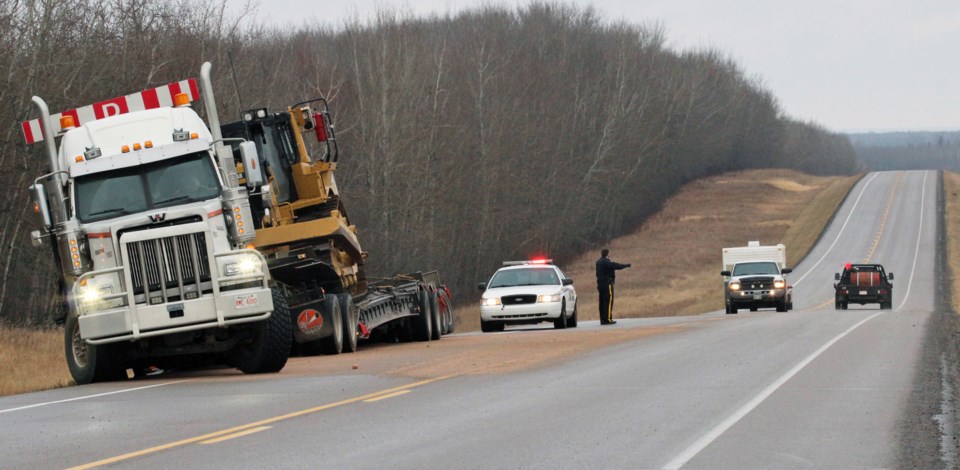You might be in denial about the coming winter, but officials at several different organizations say it’ s time to ditch fair-weather driving habits.
You might be in denial about the coming winter, but officials at several different organizations say it’ s time to ditch fair-weather driving habits.
It’ s now mid-autumn, a period of seasonal transition that makes judging road conditions more of a guessing game.
“Things are in a bit of a flux,” said traffic safety consultant Barry Sallstrom, who’ s based in St. Paul but whose work frequently brings him to the Lac La Biche area.
The morning of Oct. 29, for example, was too cold for rain but too warm for snow. The result was freezing rain, which made local roads and highways slippery. Lac La Biche RCMP officers consider poor road conditions to be a factor in the multiple collisions they dealt with that day.
If you haven’ t equipped your vehicle with winter tires yet, then now is the time to do so, Sallstrom says. Sand and salt can improve road conditions to a degree, but drivers shouldn’ t count on their effectiveness.
“It takes time for salt and sand to do its work-and it does have limitations,” said Sallstrom, elaborating that extreme cold temperatures limit salt’ s ice-melting capacity. “There’ s no magic combination of sand and salt that’ s going to make the roads safe all the time.”
Terri Lang, a meteorologist with Environment Canada, says this transition period will complicate road conditions until Old Man Winter arrives to hang his hat.
“There’ s always an issue when the temperature is very close to the freezing point,” Lang said. “The fall is the worst time for trying to make a transition. You can get quite a variation (in weather types).”
In addition to that, a lot of motorists are still in summer driving mode, she says.
“People are used to going 120 (kilometres) per hour wherever they’ re going,” said Lang. “People get lackadaisical about the weather. People just have to be aware and pay attention to the forecasts.”
Some weather observers are also expecting an El Nino this winter, which means the eastern Pacific Ocean will heat up, resulting in warmer weather in Western Canada.
That’ s good news for people who dislike northern Alberta’ s regular wintertime temperatures, but it might also mean more episodes of freezing rain and wet snow, according to Lang.
Last year, the Lac La Biche-based Program for Adult Learning hosted a winter driving and road safety course, intended for newcomers to the region who might not fully realize just how severe the wintertime conditions can get.
Program coordinator Colleen Pierce says it would be worthwhile to teach that course again this year, because many people just have the wrong attitude about winter driving.
“They’ re not prepared at all,” she said. “They think they’ re all set because they have cellphones and good vehicles, but in half this area, there’ s no cellphone service. And then if they hit a deer or the ditch or something, they don’ t have good boots or warm clothes or an emergency kit.”
Sallstrom agrees having an emergency kit is integral to safe driving. It should contain things like booster cables, blankets, a flashlight and first aid supplies. For more information and tips on what to do if you get into trouble, go to www.getprepared.gc.ca.
